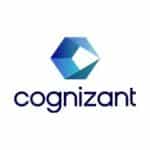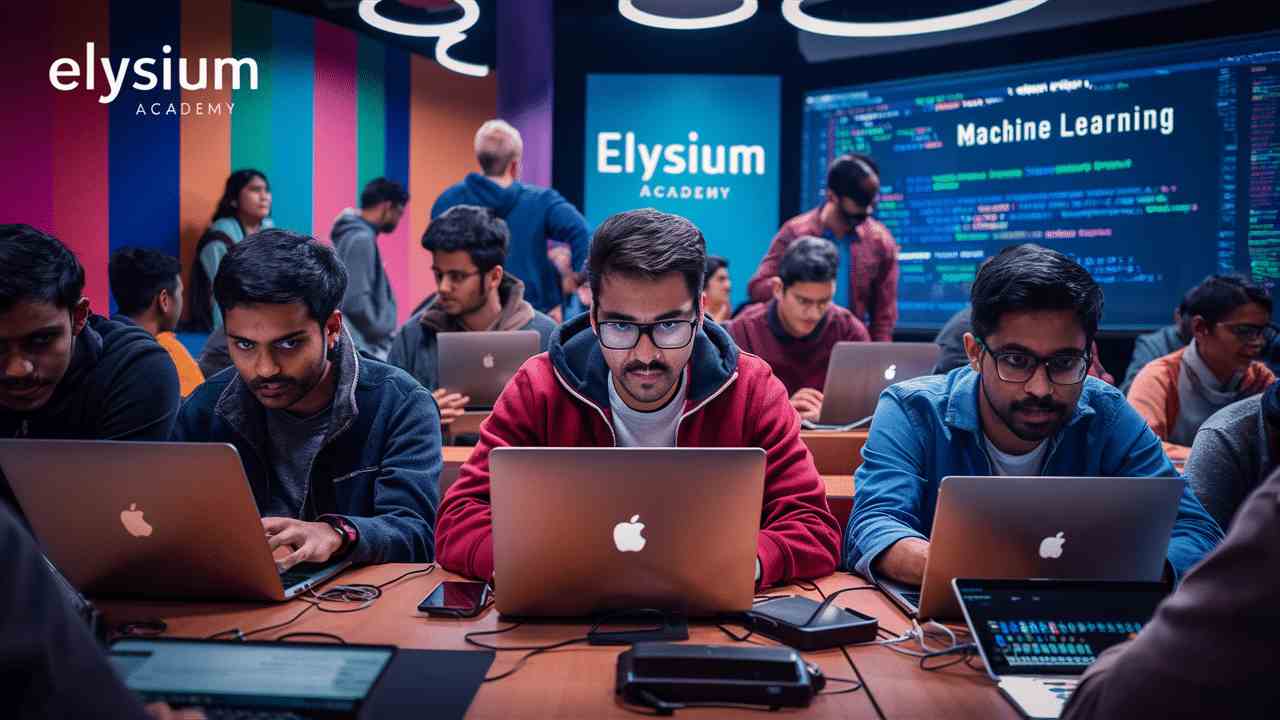Achieve Your Goals with Personalized Computer Lessons Near You
Boost Your Tech Skills with Elysium Academy’s Computer Classes Nearby. Learn Coding, Programming and Digital Literacy Today!


Elysium Academy
Discover High-Demand Career Paths with Expert Training Near You. Develop Skills in Digital Protection and Risk Analysis. Turn your passion for tech into a thriving career. Explore diverse roles in cybersecurity, IT and digital risk management.
- Online, in-person, or hybrid classes to fit your schedule.
- Continuous evaluation to track your progress.
- Collaborate with peers for a team-oriented learning approach.
- Enhances communication, leadership and problem-solving.
Innovative Support
Practical Hands on session
Immerse yourself in hands-on sessions for practical training.
Learning and Opportunities
Explore diverse avenues for enriching your educational journey.
Engaging Workshops
Dive into captivating workshops and seminars to learning.
Job Placement Support
Assists with finding internships and job opportunities.
What Sets Us

Practical Hands
Build, Create and Innovate with Practical Exercises

Soft Skills Training
Boosts communication, leadership, problem-solving

Job Placement
Assists with finding internships and job opportunities.
Why Choose Us?
We offer a variety of computer courses including coding, web development, graphic design, and Microsoft Office, catering to all skill levels.
90+ Professional Courses
Empower your future with Python programming.
Top Instructors
Empower your future with Python programming.
Online Certifications
Empower your future with Python programming.
Explore Our Courses
VBA Excel Expert Training Course
World Class Instructor 1:1 with Industry Expert 400+ Global Hiring 55% Avg. Salary Hike Overview Course Details Syllabus FAQ Acquire…
Core C & C++ Programming Training Course
Master the fundamentals of programming with our Core C & C++ Training Course, designed for beginners.
Data Analysist Training Course (R,Tableau & Power BI)
Master data analysis with our comprehensive training course in R, Tableau, and Power BI. Gain in-depth skills and practical experience...
Python for Data Scientist – Machine Learning
Python is indispensable for data scientists, powering machine learning with its robust libraries and intuitive syntax. It's the cornerstone of...
- Overview
- Course Details
- Syllabus
- FAQ
Master Python for Data Science and Machine Learning: Launch Your Career!
Elysium Academy is a leader in the Data Science domain, offering a comprehensive program to help you harness, interpret, and utilize data in unprecedented ways.
2.2
Version
90 Hours
Duration
20 Hours
Theory
70 Hours
Practical
Version
2.2
Duration
65 Hours
Theory
12 Hours
Practical
65 Hours
- Industry Based Projects
- Personalized coordinator.
- Trainer feedback.
- Trainer availability post sessions.
- Get your staff certified.
- Certificate from governing bodies.
- Recognized worldwide
- Hands on assignment
- Master Python fundamentals: variables, data types, loops, and functions.
- Advance in object-oriented programming (OOP) and error handling.
- Utilize powerful libraries like NumPy and Pandas for data manipulation.
- Visualize data effectively using Matplotlib and Seaborn.
- Implement machine learning algorithms with Scikit-learn.
- Explore deep learning techniques using TensorFlow.
Top companies offer this course to their employees
Course was selected for our collection of top-rated courses trusted by businesses worldwide.





Salary
PER ANNUM
₹ 5.5 L
Job Growth
Current Month
25%
Offer Jobs
2026
9,000
Our Python for Data Scientist – Machine Learning course offers learners the opportunity to master the essential programming skills used by data scientists today. Dive into the dynamic field of data science and learn Python, machine learning, deep learning, and their applications guided by experienced instructors. Graduates will be equipped to solve real-world data analysis challenges.
The Python for Data Scientist – Machine Learning course aims to help you master Python programming concepts. This training covers data analysis, machine learning, data visualization, web scraping, and natural language processing (NLP).
- High demand for data scientists with Python and machine learning skills.
- Python's versatility and extensive libraries are crucial for data science.
- Machine learning's integration in various industries is expanding.
- Advancements in AI and machine learning offer continuous learning opportunities.
- Graduates can become Data Scientists, Machine Learning Engineers, and AI Specialists.

Our Training Program Benefits
- Live, interactive training by experts.
- Curriculum that focuses on the learner.
- Challenge-based, hands-on project.
- Opportunities for team building.
- Cost- saving training.
- Convenient for your employees.
- Completely tailor-made curriculum.
Chapter-1 Getting Started
- History and Features of Python
- Basic Syntax
- Variables and Data Types
- Operators
- Conditional, Loop & Control Statements
- Functions
- Random Modules
- Data Science
- Data Science vs. Data Scientist
- Future scope of data scientist
- How to link python with DS
- Data Mining
- Data Sets
- Python packages
- Data Collections
- Data Preprocessing
- Data Visualization
- Data Modelling
- Pandas
- Numpy
- Scipy
- Sckit
- NLTK
- Pandas
- Numpy
- Scipy
- Sckit-Learn
- NLTK
- Matplot
- Keras
- Tensorflow
- PyTorch
Chapter-2 Data Collection and Preprocess
- Numpy
- Create Numpy arrays
- Numpy operations
- Numpy for statistical operations
- Handling Missing/Fill-na/Replace Values
- Drop Column/row
- Label Encoding
- One-Hot Encoding
- Reshaping
- Data operations
- Data frame creations
- Statistical functions in data operations
- Merging and joining data frame
- Concatenate
- What is Data Normalization?
- Standard Scalar
- Min-Max Scalar
- Hands on standard scalar
- Hands on min-max scalar
- How to collect input data
- Read CSV Data
- Read JSON Data
- Read XLS Data
- Read HTML Contents
- View Data
Chapter-3 Visualizations
- Plotting with matplotlib
- Bar charts
- Pie charts
- Scatter plots
- Box plots
- Histogram
- Bubble Chart
- Heat maps
- Graph/line graph
- Geographical data
- Plotting with seaborn
- Histogram with grid
- Distplot
- Pairplot
- Scatter plots
- Box plots
- Lmplots
- Histogram
- Challenge: Visualize titanic dataset
- Feature Extraction
- Feature Selection
- EDA
- Pairplot
- Scatter plots
- Box plots
- Lmplots
- Histogram
- Challenge: Visualize titanic dataset
- open() mode
- read() mode
- write() mode
- append() mode
Chapter-4 Machine Learning
- Al vs ML vs DL
- Application of machine learning
- How do machine learns
- Types of Machine learning
- Supervised Learning
- Un-supervised Learning
- What is Native Bayes?
- Types of Naive Bayes
- IRIS Classification
- Data Processing
- Train and create model
- Performance Estimation
- Analyse and create confusion matrix
- Ordinary Least Square and Regression Errors
- Data Processing
- Train and Test Model
- Test the model and Predict Y Values
- R-Squared and its Importance
- Score and Get coefficients
- Calculate RMSE (Root Mean Squared Error)
- Plot the predictions
- What is SVM?
- SVM kernel types
- Problem: IRIS Classification
- Data Processing
- Train and create model
- Performance Estimation
- Analyse and create confusion matrix
Chapter-5 Algorithms
- What is Logistic Regression?
- Problem: Heart Disease Prediction
- Build Model
- Performance Estimation
- Analyse and create confusion matrix
- What is decision tree?
- Decision Tree Parameters
- Problem: IRIS Classification
- Data Processing
- Train and create model
- Evaluate Model
- What is random forest?
- Ensemble Learning
- Bagging and Boosting Classifiers
- Problem: Cardio Vascular Disease
- lmplementation
- Evaluate Model
- What is KNN?
- KNN parameters
- Problem: Cardio Vascular Disease
- Data collection and preprocessing
- lmplementation
- Evaluate Model
Chapter-6 Evaluation Metrics
- Evaluate Accuracy
- Classification metrics
- What is Threshold and PHAPTER Adjusting Thresholds
- AUC ROC Curve
- Why to reduce dimensions and Importance of PCA?
- Steps to calculate PCA
- Implementation of PCA
- Visualization
- What is Ridge regression?
- Implement Ridge Regression
- Plot Ridge Regression Line
- Lasso Regression or L1 Penalty
- lmplement lasso Regression
- Plot lasso Regression Line
- What is over fitting?
- How to avoid over fitting?
- What is under fitting?
- How to avoid under fitting?
- What is Cross Validation?
- How Cross Validation Works
- Prepare for Cross Validation
- Parameter and implementation of Cross Validation
- Understand the results of Cross Validation)
- Hands On - Analyse the Result
Chapter-7 Hypertunning Model and Clustering
- What is Hyper parameter Tuning?
- Grid Search and Randomized Search Approach
- GridSearchCV Parameters Explained
- Create GirdSearchCV Object
- Fit data to GridSearchCV
- Understand GridSearchCV Results
- GridSearchCV using Logistic Regression
- GridSearchCV using Support Vector
- Randomized Search using random forest
- Select Best Model
- Randomized Search
- Model Selection Summary
- What is Clustering?
- How the clusters are formed?
- Problem Understanding: Customer Segmentation
- Get, Visualize and Normalize the data
- Import KMeans and Understand Parameters
- Understanding KMeans++ Initialization Method
- Create Clusters
- Visualize and create different number of clusters
- Understand Elbow Method to Decide number of Cluster
- Implement Elbow Method
Chapter-8 NLP and Recommendation System
- What is NLP
- Application of NLP
- Remove punctuation
- Tokenize
- Remove stop words
- Stem words
- Lemmatize
- Padding
- Part of Speech Tagging
- Name Entity Relationship
- Sentiment Analysis
- Read and preprocess data
- NLP techniques
- Tokenization
- Tokens to vectors
- Naive Bayes
- Logistic Regression
- Sentiment Analysis
- Evaluate Metrics
- What is Recommendation System?
- How Do Recommendation Works?
- Types of Recommendation
- What is Content based recommendation?
- Advantages and drawbacks
- Hands on Content based recommendation code
- What is Collaborative filtering?
- Advantages and drawbacks
- Kinds of collaborative filtering
- Hands on collaborative filtering code
- What is hybrid recommendation?
- Advantages and Drawbacks
Chapter-9 Deep Learning
- What is Neuron and Artificial Neural Network?
- How Artificial Neural Network works?
- What is Keras and Tensorflow?
- What is a Tensor in Tensorflow?
- Installing Keras, backend and Tensorflow
- Keras Model Building and Steps
- Layers - Overview and Parameters
- Activation Functions
- Layers - Softmax Activation Function
- What is a Loss Function?
- Cross Entropy Loss Functions
- Optimization - What is it?
- Optimization - Gradient Descent
- Optimization - Stochastic Gradient Descent
- Optimization - SGD with Momentum
- Optimization - SGD with Exponential Moving Average
- Optimization - Adagrad and RMSProp for learning rate decay m. Optimization - Adam
- Initializers - Vanishing and Exploding Gradient Problem
- Layers - Initializers explained
- Problem Understanding: Disease Prediction
- Read and process the data
- Define the Keras Neural Network Model
- Compile the Keras Neural Network Model
- Evaluate the result
Chapter-10 Projects
- Problem understanding: Loan Approval Prediction
- Read and preprocess data
- Data splitting
- Classification - Naïve Bayes
- Classification – Support Vector Machine
- Classification - Random Forest
- Classification - Logistic Regression
- Train the model
- Evaluate performance metrics
- Visualization using matplotlib and seaborn
- Problem Understanding : Zomato Restaurant Review
- Read and preprocess data
- NLP
- Data Splitting
- Classification - Naïve Bayes (Multinomial)
- Classification - Support Vector Machine
- Classification - Random Forest
- Classification – Decision Tree
- Classification - Logistic Regression
- Train the model
- Evaluate performance metrics
- Visualization using matplotlib and seaborn
- Problem Understanding : Product Recommendation
- Read and preprocess data
- Collaborative filtering
- Content based filtering
- Recommend the product
- Evaluate metrics
What is the Python for Data Scientist Course - Machine Learning offered by Elysium Academy?
The Python for Data Scientist Course - Machine Learning at Elysium Academy covers the essentials of data science and machine learning, including Python programming, data visualization, and model building using popular libraries like TensorFlow and scikit-learn.
What makes Elysium Academy the best Python for Data Scientist training center near me?
Elysium Academy is the top choice for Python for Data Scientist training due to its comprehensive curriculum, practical projects, and expert faculty who ensure you gain the skills needed to excel in data science and machine learning.
What are the prerequisites for enrolling in the Python for Data Scientist - Machine Learning course?
Basic knowledge of programming and statistics is recommended. Familiarity with Python is helpful but not required
How will this course benefit my career in data science?
You will gain hands-on experience with Python programming, machine learning algorithms, and data analysis techniques, which are essential skills for data scientist roles.
What kind of projects will I work on during the course?
You will work on industry-relevant projects that involve data cleaning, analysis, visualization, and implementing machine learning models using real-world datasets.
Will I receive a certificate upon completion of the course?
Yes, you will receive a certificate of completion that verifies your proficiency in Python for Data Science and Machine Learning.
Are there opportunities for hands-on practice and assignments?
Yes, the course includes hands-on assignments and projects designed to reinforce your learning and practical application of Python and machine learning concepts.
Is this course suitable for beginners with no prior experience in Python?
Yes, this course is designed for beginners. It covers Python programming from basics to advanced topics specifically tailored for data science and machine learning.
Who are the instructors for this course?
Pandas has built-in methods like fillna(), dropna(), and interpolate() to handle missing data by replacing, removing, or interpolating missing values, respectively.
What tools and libraries will I learn as part of the course?
You will learn popular Python libraries such as NumPy, Pandas, Matplotlib, Seaborn, Scikit-learn, and TensorFlow for data manipulation, analysis, visualization, and machine learning.
Will I have access to the course materials after completion?
Yes, you will have access to the course materials, including videos, slides, and code samples, even after completing the course.
Can I get support from instructors after completing the course?
Yes, you will have access to post-session support from instructors to help you with any questions or clarifications related to the course content.

- Master Python for DataScience and Machine Learning Professional
- Duration: 65 Hours
- Level: Beginner
- Days: 90 Days
- Chapters: 10
- Language: English
- Certifications: Yes
- Code: EAPL/PROF/PRTC14
- Course Code: EAAPDS
- Sub Category: DataScience and Analytics
Thank you!
We will contact you soon.
Frequently Asked Questions
What is Python for Data Science and Machine Learning?
Python for Data Science and Machine Learning is a course designed to teach you how to use Python programming for analyzing data, building predictive models and applying machine learning algorithms to solve real-world problems.
Do I Need Any Prior Programming Experience to Join?
No prior programming experience is required. However, basic knowledge of mathematics, statistics and an interest in data analysis will be helpful. The course starts with Python fundamentals before moving into data science and machine learning concepts.
What Skills Will I Learn in This Course?
You’ll learn Python programming basics, data manipulation with libraries like Pandas and NumPy, data visualization with Matplotlib , Seaborn and machine learning techniques using libraries like scikit-learn and TensorFlow.
What Career Opportunities Can I Pursue After Completing the Course?
After completing the course, you can pursue careers such as Data Scientist, Machine Learning Engineer, Data Analyst, Business Analyst, AI Developer and Research Scientist in industries like tech, finance, healthcare and e-commerce.
Is the Course Suitable for Beginners?
Yes, the course is designed for beginners and intermediate learners. It starts with the basics of Python and gradually advances to complex machine learning models, making it accessible for everyone with a passion for data science.
































